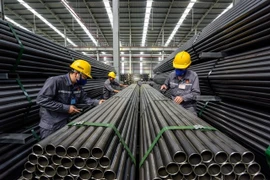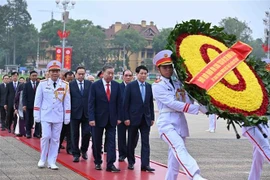Hanoi (VNA) – Amidst the US’s decision to delay new import tariffs for 90 days, Vietnamese businesses are taking advantage of this opportunity to implement both short-term and long-term solutions to minimise potential negative impacts.
Many industry experts view this challenge as a chance to restructure production process and enhance competitiveness.
Maintaining market position amidst tariff threats
According to the Vietnam Timber and Forest Product Association (Vietforest), wood exports to the US reached 8.8 billion USD last year, accounting for over 50% of the industry's total export turnover. Despite the temporary tariff delay, many businesses remain cautious about the future.
Solutions should be outlined to maintain foothold in the US market, it said, elaborating if foreign-invested enterprises, who account for nearly 70% of total export earning, withdraw from Vietnam, it would cause unwanted impacts across the entire industry.
Vice President of the Vietnam Cashew Association (VINACAS) Tran Van Hiep noted that despite declining export turnover in recent years, the US remains a major market for Vietnamese cashews with export values reaching approximately 1.1 billion USD in 2024, or over 21% of total industry exports.
Among more than 60 countries where Vietnamese cashew nuts are destined for, the US will likely remain a large market with diverse demands despite tariff challenges. Therefore, it is necessary to make every effort to maintain this market and maximise exports within capabilities, said Hiep.
Meanwhile, Vice President of the Binh Duong Ceramics Association Vuong Sieu Tin reported that the US market alone accounts for some 70% of the province’s ceramic export turnover, with several major partners consistently placing large orders over many years.
He said the US has increased import tariffs on Vietnamese ceramics from 6% to 16% but the rates remain acceptable for businesses.
The US has always been a major market for Vietnamese ceramics. As a product facing limited competition from other markets and less subject to US investigations, the ceramics industry expects to secure favourable tariff rates, he added.
In the meantime, fruit and vegetable businesses reported that exports to the US account for 9-10% of the industry's total turnover, making it their second-largest market after China.
The Vietnam Fruits and Vegetable Association (VINAFRUIT) said that the US is set to hefty tariffs on Vietnamese fruits and vegetables, making them less competitive than rivals from Thailand, Malaysia and India, which are enjoying lower taxes.
Short and long-term solutions
VINAFRUIT Chairman Nguyen Thanh Binh, said fruit and vegetable exports to the US increased by more than 60% year-on-year in the first months of 2024. Recognising the significant potential of this market, businesses are implementing various solutions.
The association is planning to propose the Government’s support in promoting new markets and assistance with taxes and bank interest rates, including extended loan periods, so that businesses facing export difficulties have financial flexibility.
Among short-term measures, Binh noted that many businesses are working with partners to increase shipments during the 90-day tariff delay period to avoid inventory buildup and higher tariffs if negotiations fail.
Similarly, cashew enterprises are accelerating exports to take advantage of the US’s postpone. A business representative revealed that cashew nut exports to the country have increased by 30% since early April compared to the same period last year, and this growth trend will continue until mid-July when the tariff delay expires.
According to Hiep, VINACAS is rushing off its feet to support enterprises with market expansion, which requires them to diversify their offerings to satisfy the taste of each market.
The Vietforest said that businesses are urgently seeking affordable raw material sources, restructuring costs to enhance competitiveness, and reviewing industry and product codes to focus production on items likely to receive US tariff preference. Besides, they are exploring new markets with growth potential such as India, the Republic of Korea, Japan, and Europe.
While acknowledging challenges, Tin suggested that tariff pressures, though difficult, provide an opportunity for businesses to reassess their capabilities and adapt production methods to improve efficiency and competitiveness.
For ceramics, with the US and China sharply increasing tariffs on each other, there's potential for more US customers to leave the Chinese market and come to Vietnam for imports, especially for products that few countries can produce, he stated./.
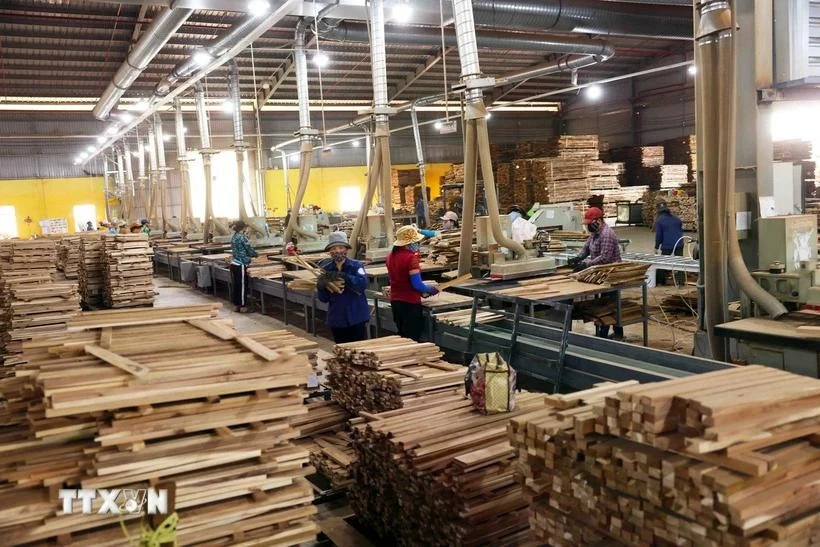
See more

PM urges proactive engagement with US on trade talks
Trade negotiations with the US must be calm, consistent, and flexible, aiming to protect national sovereignty, security, and interests, while upholding international commitments and pursuing “balanced interests, shared risks," said Prime Minister Pham Minh Chinh.
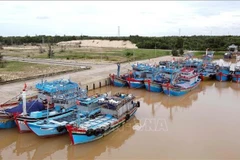
Vietnam races against time to have EC’s "yellow card" lifted before Sept. 15
The Ministry of Agriculture and Environment particularly focused on resolving all EC concerns before September 15, the deadline for submitting a progress report to the commission, as well as ensuring thorough preparations for the fifth inspection so as to secure the removal of the “yellow card” warning.
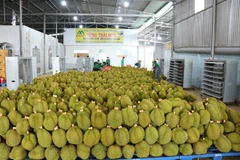
Vietnam keen on bolstering economic ties with China's Greater Bay Area
Vietnam places great importance on advancing cooperation with the Greater Bay Area, particularly in the sectors based on Fourth Industrial Revolution technologies, said Deputy Minister of Finance Nguyen Duc Tam.

Vietnam’s trade counsellors believe in opportunities amid tariff challenges
The business community should strengthen resilience and diversify supply chains to reduce dependence on a single market for raw materials and intermediate goods, heard a hybrid conference held on April 28.
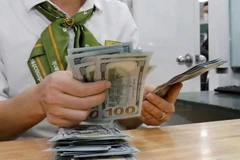
Reference exchange rate down April 29
The State Bank of Vietnam set the daily reference exchange rate for the US dollar at 24,960 VND/USD on April 29, down 4 VND from April 28.

Vietnam stimulates domestic consumption, diversifies export markets
Gaining a firm foothold in the domestic market of more than 100 million people is critically important to businesses as the domestic market, which, if properly leveraged, could help offset the decline in export orders.

Businesses urged to promote innovation in brand building
Amid global competition, branding is not just a marketing tool but also becomes a strategic factor that determines the position of enterprises and the national competitiveness.
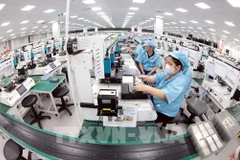
Investment in AI in Vietnam increases eightfold
Vietnam is entering a new phase of growth, where innovation, science, and technology are at the forefront of shaping its future. From being an emerging market, Vietnam has now risen to become a strategic destination for technology investment in Southeast Asia, driven by the aspirations of the entrepreneurial community and strategic guidance from the government

Vietnam, Cambodia seek ways to bolster economic, trade ties
Vietnam and Cambodia inked an agreement on promoting bilateral trade for the 2025–2026 period, which provides preferential tariffs for many competitive goods from each side – much more favourable than those under the ASEAN Trade in Goods Agreement (ATIGA).

New wharf at Lao - Viet Int’l Port inaugurated
The launch of Wharf No. 3 of Lao - Viet International Port expected to help ensure infrastructure for socio-economic development in both Vietnam and Laos, meeting the increasing demand for goods transportation.
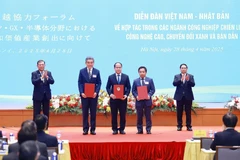
Vietnamese, Japanese PMs attend forum on strategic industries cooperation
Prime Minister Pham Minh Chinh and his Japanese counterpart Ishiba Shigeru attended the Vietnam-Japan Forum on cooperation in strategic industries, high technology, green transition, and semiconductors in Hanoi on April 28.

Seminar discusses scope for expanding Vietnam’s Halal exports to Indonesia
ITPC Director Tran Phu Lu noted that Vietnamese enterprises see opportunities to boost exports of Halal-certified products to Indonesia.
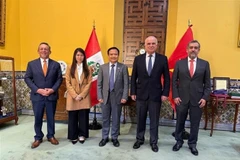
Vietnam, Peru step up economic and trade cooperation
Peru is currently Vietnam’s sixth-largest trading partner in Latin America. However, the trade value, standing at 518 million USD, remains modest compared to the potential and real demand between the two complementary economies.
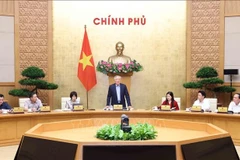
Deputy PM vows optimal conditions for firms to expand investment in int’l financial centres
Speaking at a meeting with representatives from ministries, agencies, international institutions, banks, investment funds and investors in Hanoi, Binh said that the Government of Vietnam is committed to always accompanying businesses, creating the most favourable conditions for enterprises to expand their investment in international financial centres in Vietnam as well as invest in other ecosystems that they are interested in.
Vietnam, Tunisia boost economic and trade cooperation
In 2024, trade between Vietnam and Tunisia reached 267 million USD, almost tripling the figure recorded in 2023. Vietnam’s main exports to Tunisia included footwear, raw coffee, pepper, cashew nuts, seafood, and machinery, while Vietnam imported seafood, dates, chemicals, and animal feed materials from Tunisia.
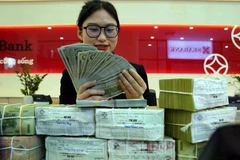
Reference exchange rate up 12 VND on April 28
The State Bank of Vietnam set the daily reference exchange rate for the US dollar at 24,960 VND/USD on April 28, up 12 VND from April 25.
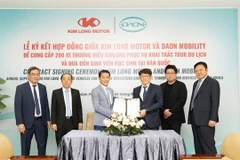
Local carmaker to export buses to RoK
It’s expected that the first batch of 50 electric EV Buses will be delivered to the Republic of Korea (RoK) for operation in the second quarter this year.

Da Nang launches direct air route to Uzbekistan
Nguyen Thi Phuong, President of Prestige DMC Vietnam, noted that the charter service from Tashkent to Da Nang is being operated through a partnership between Prestige DMC Vietnam, Red Island Company, Centrium-Air Airways, and Prestige Travel Uzbekistan.

Surging forward on motorways in Mekong Delta region
The PM has stressed the need for the Mekong Delta region to develop rapidly and sustainably, contributing meaningfully to national growth.
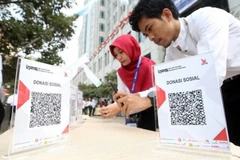
ASEAN, China promote cross-border payments
In the first quarter of 2025, the value of RMB transactions between China and Malaysia reached 102 billion RMB (4 billion USD), up 27% year-on-year, while transactions with Cambodia reached 5 billion RMB (686 million USD), an increase of 45% compared to the same period in 2024.
